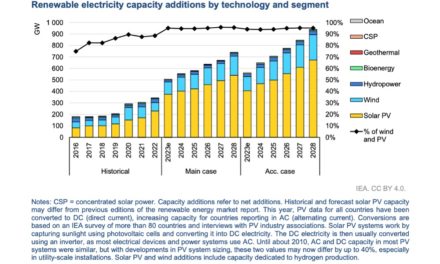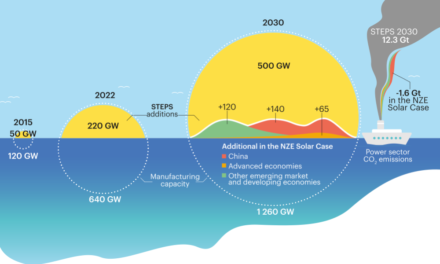- IEA says the world has enough solar PV module manufacturing capacity to help meet its targets for net zero emissions
- Investments in solar PV manufacturing totaled $80 billion in 2023 out of $200 billion in clean technology manufacturing
- A majority of solar PV facilities were underutilized due to the overcapacity situation leading to lower prices
- China, the US and Europe will continue to ensure the concentration of clean technology manufacturing till 2030
In a new report, the International Energy Agency (IEA) says the global solar PV module manufacturing capacity is already in line with what it thinks is needed in 2030 to meet the net zero emissions scenario. In 2023 alone, the world added almost 500 GW of new module manufacturing capacity, with nearly 440 GW installed in China.
“Existing manufacturing capacity for solar PV modules and battery cells could today achieve what is necessary to meet demand under the NZE Scenario in 2030 – six years ahead of schedule, with only modest gaps remaining for the upstream steps of wafer and polysilicon manufacturing,” reads the report Advancing Clean Technology Manufacturing.
Even though the global solar PV module output grew to around 560 GW, compared to around 360 GW in 2022, the average utilization rate across the PV facilities was around 50% in 2023, thanks to supply outpacing demand, thus lowering prices. Newer technologies like TOPCon cells saw higher utilization rates than the older ones, according to the IEA.
The overcapacity situation is forcing solar manufacturers to scale down their expansion plans for which the report cites China’s LONGi, Europe’s Meyer Burger and US’ CubicPV as examples, among others.
Nonetheless, investment in solar PV technology continues unabated. In 2023, as much as $80 billion was invested in this technology, out of the total $200 billion in clean technology manufacturing. In China, investments more than doubled between 2022 and 2023 for solar PV manufacturing.
In fact, China accounted for 3/4th of the entire global investments in clean technology manufacturing last year. Around 40% of investments were in facilities that are due to become operational this year.
China is also the lowest-cost producer for all the technologies covered by the IEA report. For solar PV, wind and battery manufacturing, facilities in the US and Europe are typically 70% to 130% more expensive per unit of output capacity.
Analysts believe the upfront costs contribute only modestly to the overall levelized cost of manufacturing since the annualized capital expenditure amounts to only 15% to 25% of the total cost of producing PV modules with a cost of capital of 8%. Operational costs account for a larger chunk in aggregate, accounting for 70% to 98% of total manufacturing costs. Hence, the writers see reducing the costs of energy, materials and components as an important level to reduce cost gaps.
The trio of China, the US and the European Union (EU) account for about 80% to 90% of solar PV, wind, battery, electrolyzer and heat pump manufacturing, with China accounting for over 80% of global PV module and 95% of wafer capacity.
The IEA analysts don’t see this status quo changing till 2030 ‘even if all announced projects come to fruition.’
Requesting a call to action for the government, the IEA recommends policymakers to support innovation, plug cost gaps to reduce lead times and upskill workers, and also collaborate internationally.
The complete report is available on the IEA’s website.















